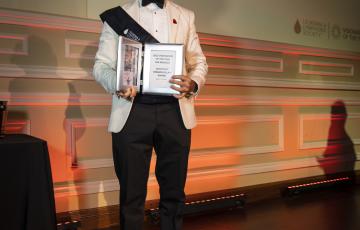Search Results
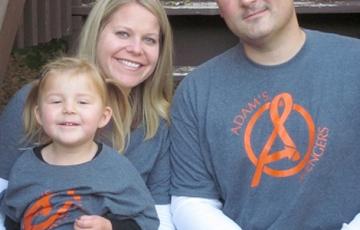
Danielle
I am currently on the Board of Trustees for The Leukemia & Lymphoma Society's Minnesota chapter. The reason why I decided to dedicate my time, talents and networks to this organization is because I am passionate about finding a cure for cancer. This passion runs so deep in me, it serves as a constant reminder of how fleeting life can be. And, that everyone deserves a lifetime.

april
In 1996, at the age of 16, I found a lump in my neck that quickly grew to an alarming size. After ruling out illnesses such as cat scratch fever and tuberculosis, the lump was biopsied at Vanderbilt Medical Center in Nashville, TN and I was diagnosed with stage 2A Hodgkin's Disease (now called Hodgkin lymphoma). I went through 6 months of chemotherapy, followed by 2 months of radiation.
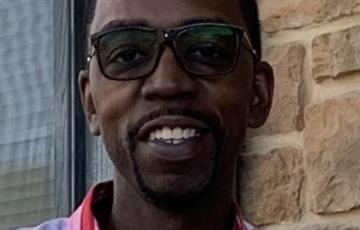
Oya
My three kids are my precious jewels, the reason I get up every morning. As a single parent, providing a good life for them is what fuels my drive to succeed. Little did I know that need to care for them would end up saving my life.

Volunteer
It all began in 2010 after my friend Cara and I ran the LA Marathon. We had already trained on our own for the 26.2 miles race. I thought, “Why not just keep running?” That’s when I found the nonprofit The Leukemia & Lymphoma Society and their fundraising program called Team In Training (TNT)! TNT was the only program you could volunteer with to get a secured race entry into the San Francisco Nike Women's Marathon. So, I registered for an informational meeting at the mall near my parents' house, listened to the staff and coaches, as well as a survivor, and I was hooked.

Hardee
In April 2020, I was diagnosed with Stage 2 Hodgkin lymphoma (HL). My life was turned upside down after this diagnosis, and I was in extreme denial even months into my treatment. I was forced to go through six months of chemotherapy and two surgeries to treat it. Being diagnosed with cancer at the age of 20 in the midst of a pandemic taught me many things. One of the biggest things I learned is to never take anything for granted. One day I was a normal 20-year-old hanging out with my friends, and the next I was shaving off all my hair because of treatment.
Jessica
Jess began volunteering with The Leukemia & Lymphoma Society (LLS) in February 2021. Jess is currently pursuing her Patient Advocacy Certificate and found an opportunity to join LLS as a volunteer to gain more experience working with the Patient and Community Outreach Department. Although she is a newer LLS volunteer, her journey to finding her passion for patient advocacy started seven years ago. In 2014, Jess was diagnosed with myelodysplastic syndrome (MDS). MDS is more common in men than in women.
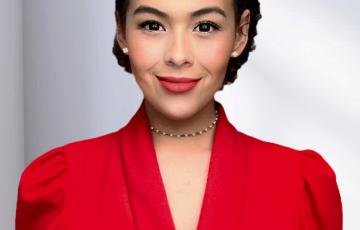
Kassandra
Exactly a month before my 24th birthday, I was diagnosed with acute lymphoblastic leukemia (ALL). As a young adult, hearing the words “you have cancer” come from a physician’s mouth was earth-shattering, to say the least.
Prior to my diagnosis, I had been working in clinical research and was enrolled in a Biomedical Science Master’s program with hopes of continuing to medical school and becoming a physician. However, my career aspirations were placed on hold when I received my diagnosis. Immediately, my dedicated student lifestyle turned into one of a full-time patient.
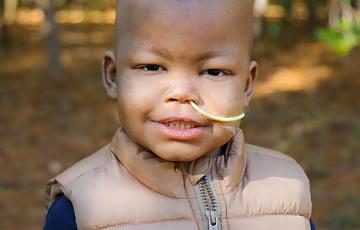
Cayden
In April 2020, three-year-old Cayden began experiencing leg pain and developed an unusual limp that alarmed his mother, Courtney. Soon, the pain progressed to a stiff neck and loss of appetite. Just two weeks later, after multiple tests and doctor appointments, Courtney and her husband would hear the words that every parent fears, "your child has cancer". Cayden was diagnosed with a high-risk form of blood cancer, Philadelphia chromosome-positive acute lymphoblastic leukemia (ALL).
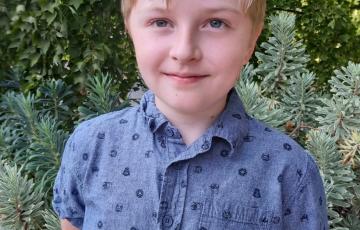
Toben
Toben had entered preschool at 3½ years old, and within a few months, he was getting sick often. He started getting random fevers that would go away in a day. When he got leg and arm pains, we started to get concerned. The pains were so bad that he couldn't walk and would wince when we picked him up or moved him. At his four-year check-up, he wasn't showing any signs or symptoms, so we chalked it up to growing pains. Most of the summer he was fine, but by the end of July, the symptoms were stronger and lasted longer and longer.
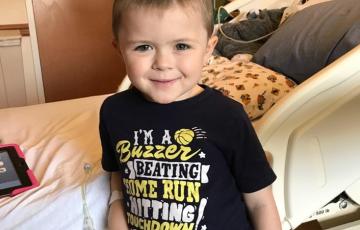
Lincoln
In the fall of 2017, Lincoln was not feeling well and had typical cold virus symptoms. He also had a recurring fever and an unexplained rash. After two trips to the pediatrician, the doctor thought he had a persistent virus and then bronchitis. On our third visit, they thought he may have mono, so bloodwork was taken, and we were told to go to Children’s Hospital immediately. We were scared and had no idea what was wrong. Cancer was not even a thought.

Rashad
"Rashad!" As I looked around, I realized she was calling me.
What happened next was like a scene from Charlie Brown, as all I could hear were mumbled words. I began to reminisce about what I used to be ― a collegiate athlete in the best shape of my life.
This couldn't be my new reality; this couldn't be happening to me! What did I do to deserve this? Why is it happening to me? I'm sure you can relate to this reality if you are reading this.

Annette
I had been feeling unwell for quite a while. I would come home from work and go to bed right after dinner. I would sleep for hours and still be fatigued. When we had afternoon meetings, I would fall asleep. My husband and I kept thinking it was my very stressful job. I was on airplanes three times a week and would be traveling all over the country. I wasn’t eating or sleeping well. I finally decided to take early retirement. I still did not feel well even after being retired. I finally got to the point where I was so sick, I told my husband to take me to the emergency room.
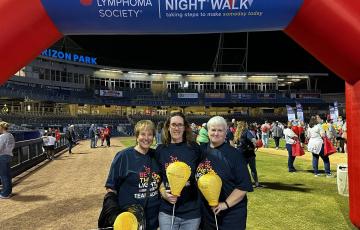
Holly
In 2016, I joined The Leukemia & Lymphoma Society (LLS) Tennessee Chapter as a supportive member of Team Addie. I had friends who became team members the previous year, walking in Nashville’s Light The Night Walk (LTN), and they encouraged me to get involved in the cause with LLS and LTN. Nashville is a city that my friends and I have gained so much love for through the years. I must admit I was hesitant to join at first because blood cancer specifically hadn’t affected my life or the people in it.
Watch and Wait
Not all CLL patients need to start treatment immediately. “Watch and wait” is a valid treatment approach that means your doctor will watch your condition but not give you treatment unless you have signs or symptoms that appear or change. This approach includes:
Legal and Financial
Advance DirectivesAdvance directives are a patient's instructions about future medical care in case he or she can no longer speak for himself or herself. Ideally, an advance directive should be in place before a person becomes ill or before a crisis.
Treatment
The main treatment for ALL is chemotherapy given in phases. Most treatment regimens take 2 to 3 years to complete.
Not every child with ALL receives the same treatment. Your child’s doctor will tailor your child’s treatment based on the ALL subtype and other factors, such as age, health and how the cancer responds to treatment.
Your child’s treatment may also include:
Nina
Back in March 2015, my then 26-year-old daughter was not feeling well. She had severe abdominal pain, overwhelming fatigue, night sweats, a low-grade fever, a headache, and appeared to be losing weight. At the time, my daughter was working as a speech language pathologist in a hospital in Maryland. She was misdiagnosed by an ER droctor and two months later, after her primary care doctor ordered an ultrasound, we found that she had innumerable tumors in her lungs and spleen. We saw an oncologist the next day who ordered more blood work and a PET scan, as well as a bon

Naomi
My story begins when I was 11 years old, and I remember it being the summer after my sixth-grade year. I had just made the volleyball team and was so excited about that and the upcoming school year. I don't know if you remember middle school, but it was a bit of an awkward time, so I was looking forward to getting older, becoming surer of myself, and making more friends. Unfortunately, at some point during the summer, I started to feel fatigued.
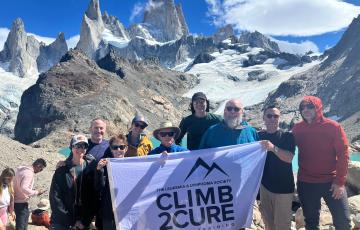
Alice
In March 2023, while visiting my daughter and son-in-law in San Francisco, I saw the Climb2Cure trip to Patagonia listed on The Leukemia & Lymphoma Society's (LLS) website. They have always talked about their backpacking trip to Patagonia in Argentina and Chile as their favorite hiking trip ever. This event would be my 16th LLS fundraising adventure since going into remission from multiple myeloma (MM) in 1999.
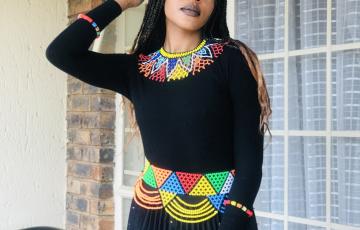
Monica
I am currently 23 years of age and I’m from South Africa. This is my story of my journey with Hodgkin lymphoma. This is a story of hope, a story of victory and a story meant to inspire those affected to keep holding on. Towards late October of 2019, I noticed a bump protruding on my chest. It was a very hard and rigid bump which didn’t move. I was still in university completing my post-graduate diploma in accounting, so I didn’t think too much about it, my main stress was to complete my degree.
School
This page includes information about:
Side Effects
Both cancer therapy and acute myeloid leukemia (AML) can produce side effects. For most patients, side effects are temporary and subside once the body adjusts to therapy or when therapy is completed. For other patients, side effects can be more severe, sometimes requiring hospitalization. The side effects of chemotherapy may vary, depending on the drugs used and the overall health of the patient.
Before you undergo treatment, talk with your doctor about potential side effects. Medication and other therapies can prevent or manage many side effects.
Chemotherapy
ChemotherapyChemotherapy is the use of potent drugs or chemicals, often in combinations or intervals, to kill or damage cancer cells in the body. Chemotherapy drugs are often called anticancer agents. The drugs must be toxic enough to kill leukemic cells, which is why chemotherapy can be hard on your body; the drugs' toxicity can harm your healthy cells as well. However, successful chemotherapy depends on the fact that cancerous cells are more sensitive to the chemicals in the drug than normal cells are.
